On Blackness and Landscape
Author(s)
Jason Allen-Paisant
In ‘Reclaiming Time: On Blackness and Landscape’ (voor het eerst gepubliceerd in PN Review issue 257 in 2021), bekijkt dichter en schrijver Jason Allen-Paisant de geracialiseerde maatschappelijke contexten en moderne milieuconstructen die ‘Zwarte levens disproportioneel beroven van de voordelen van tijd.’ Hij put uit zijn poëziebundel Thinking with Trees om een koloniale epistemologie van de natuur te schetsen, en de rol van poëzie te benadrukken in het genereren van vormen van Zwart verwantschap en politiek bewustzijn, gebaseerd op een hernieuwd gevoel van ‘diepe tijd’. De vraag of het mogelijk is om middels poëzie ‘tijd terug te claimen’ staat centraal in de tekst.

Later, at the age of five, I went to live in a town with my mother who was a school teacher. All of a sudden I was propelled into a different lifestyle. We would continue to be “poor” but now at least we lived in a small town. We never got “coming out of the bush” to coincide with “upward social mobility,” which became a source of frustration. Poverty can create feelings of enclosure. I believe it is, first and foremost, an affect (the absence of commodities and resources does not in itself equal poverty). We were living a half-rural, half-urban life, always with the aspiration of leaving the rural behind, because the rural was perceived to be an index of poverty. On the one hand we were trying to escape the rural, elemental lifestyle; on the other hand we couldn’t afford the trappings of middle-class lifestyle. We went to the beach once a year, for example . . .
Now that I think about it, the whole idea of middle class in Jamaica is about turning your back on the elements. The middle-class ideal entails distancing yourself from the natural, the woodland, any space associated with the “primitive”—and that includes folklore and myth, in which the woodland is the space of spirits, “duppies.”
Given the attempts to distance Africans from ancestral practices, Blacks in the New World were forced to internalize a colonial epistemology of nature. The fact, for example, that African spiritual practices (including pharmacopoeia and various healing practices) were viewed as suspect by the colonizers rendered more problematic an already complicated relationship to the land. The urban space is the locus of progress. Nature belongs to the rural, not the urban. Nature is disorder, “dirt,” that which drags us down. There may well be links here with nineteenth-century Europe, in which there emerged the utopia of doing without nature, of replacing soils with a kind of chemical soup, since nature, it was thought, needed to be controlled, even eliminated.
So in the small town of Porus where I lived from the age of five, people often pave over their front lawn. There is this obsession with covering the green. Modern upward mobility is concrete. The fracture that we experience between ourselves and nature, the desire and obsession to put distance between ourselves and the natural world, is rooted in slavery and colonialism. We try to distance ourselves from the “poor condition” of living with the earth. To compound matters, violence and criminality deter us from venturing into the outdoors. Landscape and the possibilities of landscape are underpinned by socio-economic dynamics rooted in a colonial history and its afterlives. History—the past and present of social violence—make the woodland in Jamaica anything but a place of leisure. We live in a deep-seated social fracture that keeps us distanced from the natural.
The question of Blackness and landscape is a complex one. For the Black body, walking is complicated, and to walk in a dark, veiled place is seldom an innocent act. Histories of the hunted Black body form part of the collective memory of the African diaspora. If the city often proves to be a dangerous space for Black people, as recent events have demonstrated, the fact is that, in the Black imaginary, it is the city that is perceived as the site of relative safety, while the outdoors continue to be associated with the “constant necessity and activity of running away, of flight,” as cultural theorist and poet Fred Moten puts it.
How then do we walk? How then do we inhabit leisure? What is “nature” to us?
I am thinking about spatial enclosure. To what extent are my past experiences and feelings of enclosure rooted in colonial ideologies and histories? My current poetic project is one of writing (against) enclosure.
Allow me a slight detour away from poetry, the better to underscore the concerns I engage in my poetry. While thinking about these issues, I encountered the work of photographer Ingrid Pollard. I have been particularly interested in a series of photographs Pollard took and exhibited in the late 1980s. It is quite interesting that the issues Pollard was grappling with in the 1980s are still just as present today.
In “Pastoral Interlude,” Pollard takes familiar sites and makes them legible in new ways, playing with the viewer’s sense of what seems natural or not so natural, forcing us to give attention to the ideological workings of landscape. The photographs involve “reading” the ways that land has been marked, culturally speaking.
In the first photo, a Black woman, perhaps the artist herself, sits on a stone wall. Behind her a fence marks one boundary of a landscape of rolling hills. She is clad in white jumper, beige trousers tucked into mid-calfheight green socks; her head wrapped in a green scarf. She sits with a camera on her thigh. Her eyes look intently at something outside of the frame; whatever it is, she seems to be watching it with curiosity. The caption begins: “It’s as if the black experience is only lived within an urban environment. I thought I liked the Lake District; where I wandered lonely as a black face in a sea of white.”
The evocation of William Wordsworth in “I wandered lonely as a . . . ” is, of course, evident. Through the ironic evocations of Wordsworth’s iconic poem, the artist challenges the Romantic associations attached to wandering on foot through the land—leisure, relaxation, finding oneself— while highlighting the absence of bodies like her own in the landscape, and in cultural representations of the English countryside. There is an ambivalence in the speaker’s feelings: the artist depicts herself as wanting to be there, as discovering the pleasures of the Lake District (“I thought I liked the Lake District”); and, at the same time, as feeling a strange sensation of “unease; of dread . . . .” The suspension dots suggest an ongoing question, a kind of inability to fully explain why such feelings of unease exist and persist.
Wordsworth’s poem speaks of rest—the rest that allows one to observe the daffodils “fluttering and dancing in the breeze,” and the rest that such an experience gives to the mind. By contrast, the body language of the woman in the photograph does not strike me as being entirely restful. Her facial expression and her legs and knees that press against each other suggest a state of tension, that she might not feel entirely safe in this environment.
In one interview, Pollard was asked whether there was any personal experience that triggered her interest in the British rural, its mythologies and overwhelming Whiteness. She replied:
Just going on holiday. We only had a couple of holidays as a family—we didn’t have that kind of income— but we went camping a couple of times. When I left my parents, I used to go with friends to the Lake District. I wouldn’t see another black person for a week, and you would notice. It was hard. My white friends would be going to relax, and it would create anxiety for me. I appreciate the countryside, but it wasn’t particularly relaxing. I just wanted to do something about that.
*
My book Thinking with Trees (2021) considers Blackness and nature from the perspectives of time, race, and class, while interrogating the cultural and geographical meanings of landscape. These poems evoke the environmental conditions underpinning Black identity, while urging us to imagine alternative futures. The book follows a Caribbean tradition of weaponizing language through irony, and does so as a means of challenging social, racial and spatial boundaries. It engages a Jamaican lens on the British landscape and British ways of life, while reflecting on my changing “identity” as I negotiate the shared and constructed space of landscape.
Thinking with Trees grapples with the fact that spatial exclusion grows into the literary field as well. In the eyes of publishers and readers, nature writing is a White concern. They bemoan the dearth, or “non-existence,” of Black nature writers. They ask, “Where are they? Are Black writers not interested in nature and ecology?” The question is loaded with a set of assumptions and ossified ideas about nature, about Black writers, about the human being in relation to nature. It fails to acknowledge certain realities about the relationship between Blackness and landscape. It is ignorant of History, of the undemocratic aspects of landscape, and of the things that “nature” might mean in non-White imaginaries.
*
THOSE WHO CAN AFFORD TIME
Who wanders
lonely as a cloud
with three golden retrievers?
Not me no not me
I could never understand this poetry
never understand what the poem was saying
and how this could be
poetry for me
when my English teacher drilled
the imagination of a white man’s country
I didn’t know how but somehow I knew
this wandering was not
for me
because
ours was not the same kind of time
our wandering never so accidental
so entire so free
as if nothing was coming as if no hawk was near
as if they owned the land and the mansion on it
as if tomorrow and forever was theirs
as if they had the right to take their time
because
everything about them so refined so secure
so clean
So Wordsworth’s poem never made sense
I’d never stop to listen to the poems about trees
& mushrooms & odd cute things & birds whose
names I could never pronounce
My poetry was Tom the village deejay
It was more material I said
than the woods than the lives of those who loafed
& bought their time
with money I thought
those who had all the time in the world
*
Where the relationship between Blackness, nature, and history is concerned, a few observations are necessary. I will state these baldly. Firstly, in disrupting relationships with nature (dwelling practices), colonialism disrupts ways of knowing the world (knowledge practices). Secondly, the work of coloniality is based on control over nature. Thirdly, part of that control is the control of the othered (dangerous, out-of-place, to be controlled) Black body.
The assimilation of the Black to nature is central to the functioning of coloniality. But this is, of course, paradoxical, since, while the dynamics of coloniality assimilate the Black to nature, it also, at the same time, separates her or him from it. In the New World, as philosopher Sylvia Wynter points out, the African “himself served as the ox for the plough of the plantation system which brought about the technical conquest of Nature.” The history of European colonialism in sub-Saharan Africa reveals similar logics with respect to the control of bodies and land.
Yet, in the New World, the African presence “rehumanized Nature, and helped to save his own humanity against the constant onslaught of the plantation system by the creation of a folklore and folk-culture.” The Africanist construal of the land as always Earth, the centre of a core of beliefs and attitudes, would constitute “the central pattern which held together the social order.” Through sacred rituals (dance, drum rhythms, forms of “earthing” through possession rites, masquerades that enacted the drama of the gods), Afro-Caribbeans created a different temporality. Thereby, they maintain a sense of the sacred, and the affirmation of ancestral ties that bind the community to Earth, enabling humanness despite social death. The results of these attempts to “grapple with a new Nature” are well known: Haitian Vodou, Santería, Obeah, Pukkumina, the Orishas, the Shango Baptists, Rastafari, among other forms of sacred practices which sought to animate a life whose aim was to produce groundless individuals.
However, these forms of resistance, if they help to create alternative realities and perpetuate ancestral worldviews, also highlight the nature-culture fracture that begins during slavery and persists today. A part of slavery’s violence was that “the enslaved was excluded from responsibility for the land in which she lived and worked,” as political ecologist Malcom Ferdinand writes.
Our relationship to land, our ability to relate to Earth in a certain way determines our freedom, but also another fundamental human urge, which is the urge of belonging. Here it is worth pointing out, as cultural theorist Raymond Williams has done, that the etymology of “nature” ties it to “native” and also “nation” . . .
How does a Black history of exclusion from land influence how we think about Black futures in nature and the environment?
*
I had been busy writing poems about the police and white cops killing Black people and black anger and rage and that kind of stuff. And then I realized that the time we spend pouring our souls into that kind of writing and thinking robs us of time. There is no doubt that we must continue to write about these issues; we have no choice. But I am forced to think about the relationship between coloniality, racism, humanness and time. This brings me back to my work and its central theme of time.
The observation of process is a political act linked to a reclamation of time. It highlights the fact that racism pushes us into an attitude of always reacting: to hurt, anger, provocation, exclusion. This is a theft of time, a robbery of the connection we are meant to have, as humans, with real life. In that sense, the poems in Thinking with Trees are an expression of my taking time, in a societal context that creates the environmental conditions that disproportionately rob Black lives of the benefits of time: leisure, relaxation, mental and physical well-being, etc.
Right now, I’m standing beneath what used to be, I imagine, an impressive tree. It is split down its bole, it is still alive, has sprouted green leaves that will be rustling way into September. But at its base and lying athwart the clearing is the severed part that looks so dead and yet so alive. The color of brown has weathered to near-grey and the footfall of walkers has covered the wood with a layer of dust. And yet the part that has fallen among the spikenard and hungry shrubs seems so alive in its death.
Disintegrating and flourishing
frail and green
The raspberries feed on its breath
and beetles thrive in the slurry middle where the
bole rots
Process. The wax and wane of objects, the feeling of life coming into me. The feeling of self as part of life.
Slowness. I am talking about time, a defence of time. I’m talking about the robbery of time from Black life. I am talking about the ability to be slow. I am talking about the ability of our bodies to be here. I’m talking about the ability of my body to be in the woods. Thinking about people, the people who find me strange because I am just standing here, the people who look at me while talking, look at me suspiciously, because I decide to stand and listen and look, because I am not going anywhere. Because I’m just standing.
I’m thinking of how we have been workers. I’m thinking of how my ancestors have been the workers, just the workers. I’m thinking of the Congo and how one man had a land almost eighty times the size of Belgium as his personal estate. I’m thinking of the cruelties of work among my people. I’m thinking of my ancestors who were enslaved. I’m thinking of rest, I’m thinking of slowness, I’m thinking about reclaiming time:
I am talking about reclaiming what middle-
class people call leisure.
I realise now what I have missed all these
years.
*
Poetry is the expression of a profound connection with life. Listening and seeing are our avenues of connection, and this is poetry’s gift: that through poetry I can stop, listen, observe and participate, rather than simply react. The purpose of racism is a life that is constantly reacting, being affected, being hurt, being angry. Poetry’s gift is a different sense of time, not one marked by utility, accumulation, greed and blind progress—in a word, the logics of capitalist accumulation and its bourgeois ideals that produce wars, genocides, various human catastrophes. Poetry’s gift to me is a sense of deep time, and that is its sense of wholeness, of connection. Poetry is a reclamation of time. Of connection, rather than reaction.
Inevitably, the poems do sometimes convey my sense of unease and uncertainty while in the veiled, hidden spaces of the woods. But they also highlight the fact that I must be there.
*
The sun splashes its light on the trees. Their exposed skins glisten. The evening glow penetrates me and I move into it. Inside me a living thing is ripening. In this month of December when night falls in early afternoon, it is a struggle to get here. And now that I see it, I am living. I was made to live. Not to schedule appointments or solve clashes on an online calendar. I was not made to spend a day in front of my computer.
There is a sadness that returns. A sadness for the boy I once was, growing up in Porus. What was my poverty? Wasn’t it living in a space that was too little, not being able to go very far? The poverty of being blind to living and a slave to always doing:
We had no time to waste
To go far might have been just
to enter the woods
behind the house.
But there was a wall separating me from it.
*
The positioning of the Black body always outside of land, with all its privileges in regard to leisure, well-being, health, and so on, is a key aspect of the narrativizing of power and of the determinism that shapes geographies of Blackness that inscribe Black culture as always already within urbanized space, and much less within the “outside spaces” of freedom, leisure and escape.
The consequences of the disproportionate exclusion from land (and land as leisure) have been powerfully demonstrated in recent times, through the inequalities revealed throughout the Covid pandemic. The issue of the pernicious effects of unequal access to land (on physical and mental health and wellbeing) have suddenly become no longer a matter of theoretical gesticulations but of vividly obvious power structures and embodied realities. While everyone was “under lockdown,” at least in theory, the access to natural space, anywhere from a backyard garden to a manorial estate, was clearly not a given for everyone. Likewise, therefore, the ability to “cope” with the state of exception that had been created.
I’m really not interested in hearing any
more middle-class people screaming that
people shouldn’t be going outside at all
when your back garden is the Hundred
Acre Wood.
– @SammiLouui, Twitter
Let’s return to the question posed earlier: How does a history of colonialism that has weaponized land against Black lives in the Caribbean, America, Africa, and Europe, how does a Black history of exclusion from land, influence how we think about Black futures in nature and the environment?
I propose that a Black future in nature must include an altered relationship to time.
*
I believe this can be achieved, collectively, through art. Art offers to racialized people an alternative space (a counter-analytic) to Babylon. And art for us must be togetherness, community. A way in which humanness becomes a matter of connection, again. We must form connection around the type of consciousness that frees us from the System, from the consciousness of the capitalist machinery that seeks to devour us. Can this be a point of departure for new forms of socialities for Black lives and of political awareness based on our sense of deep time? That implies the need for solidarity. And if solidarity involves connection to the more than human world, then it is also, necessarily, connection amongst ourselves.
Bibliography
Ferdinand, Malcom. Une écologie décoloniale: Penser l’écologie depuis le monde caribéen. Paris: Éditions du Seuil, 2019.
Pollard, Ingrid. “How She Had to Fight for Black Representation: Interview,” Elephant Magazine, no. 42 (Spring 2020): elephant.art/ingrid-pollard-fight-black-representation-glasgow-international-womens-library-lesbian-archive-photography-rural-landscape-britishness-07022020/#.XqgFNGJm23C.twitter.
Moten, Fred and Saidiya Hartman. “To Refuse That Which has been Refused to You” Chimurenga, 19 October 2018:chimurengachronic.co.za
Williams, Raymond. Keywords: A Vocabulary of Culture and Society. New York: Oxford University Press, 2015.
Wynter, Sylvia. “Jonkonnu in Jamaica: Topwards the Interpretation of Folk Dance as a Cultural Process” in We Must Learn to Sit Together and Talk About a Little Culture: Decolonizing Essays 1967–1984, 192–243. Leeds: Peepal Tree Press, forthcoming 2022.
This text was first published in PN Review 257 (2021), republished here with permission of the author and PN Review. Jason Allen-Paisant’s poetry collection Thinking with Trees, published by Carcanet (2021), is available here.
Related
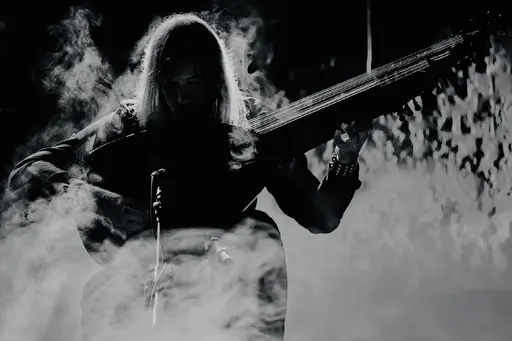
In dit korte afro-futuristische verhaal, geschreven door Amiri Baraka in 1995, ontdekt een ongenaamde uitvinder een manier om terug te reizen door de tijd – door muziek. “I duwde de Anyscape in de Rhythm Spectroscopic Transformation. En toen stemde ik het af zodat Anywhereness kan worden gecombineerd met de Reappearance als muziek!” legt de uitvinder uit. “Nu voeg ik Rhythm Travel toe! Je kunt verdwijnen en verschijnen waar en wanneer die muziek speelde.”

Tijdsgebonden drag, erohistoriografia, chronomornativiteit, geilheid onder het kapitalisme, ritme, dansen en 'crip time'. Dit zijn een paar van de onderwerpen die worden genoemd in het interview met Elizabeth Freeman, queer theoreticus en auteur van de boeken Time Binds: Queer Temporalities, Queer Histories (2010) en Beside You In Time: Sense Methods & Queer Sociabilities in the American 19th Century (2017), en Amelia Groom, co-editor van de 'No Linear Fucking Time' focus op Prospections.
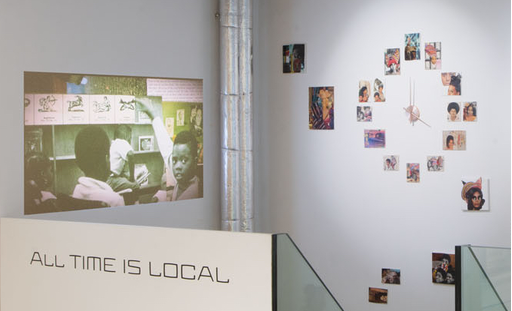
Reclamations of time, geared toward community and temporally “local” orientations, animate this interview with artists and activists Black Quantum Futurism (Rasheedah Phillips and Camae Ayewa), who draw from Afrofuturism, quantum physics, and “Afrodiasporic traditions of space and time that are not locked into a calendar’s date or a clock’s time." As discussed in the interview (which first appeared in Toward the Not Yet: Art as Public Practice, published by BAK and MIT Press, 2021), BQF’s recent and forthcoming projects directly challenge imperial and colonial standardizations of time.
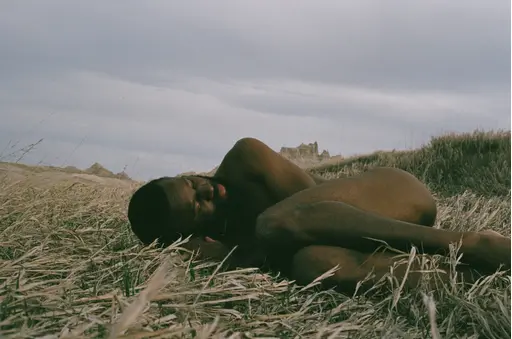
Dit essay, oorspronkelijk gepubliceerd in het Journal of Interdisciplinary Voice Studies, is een onderdeel van muzikant en schrijver JJJJJerme Ellis’s veelzijdige project The Clearing. Ellis beschrijft het bos en zijn open plekken als “plekken van weerstandige ‘black oralities’” en verkent hoe stotteren, Blackness en muziek kunnen figureren binnen de praktijken van het weigeren van hegemonisch tijdsbeheer, spraak en ontmoeting.
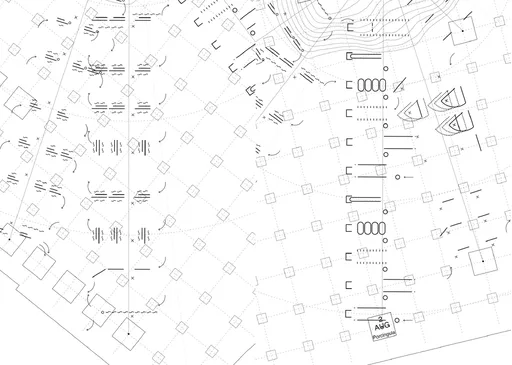
Wanneer inheemse gemeenschappen worden gevraagd om bewijs te tonen van hun traditionele connectie met hun voorouderlijke landen, respecteert wat Westerse legale instanties accepteren als documentatie niet volledig hoe stammencultuur en traditionele manieren van kennisoverdracht werken. Het onderzoeksproject en boek The Language of Secret Proof (2019), geschreven door Nina Valeria Kolowratnik, reageert op de ervaring met de productie van bewijsmateriaal van bewoners in Jemez Pueblo, New Mexico. Dit boek bevecht de omstandigheden waaronder de rechten van inheemse volken om traditioneel land te beschermen en terug te winnen worden behandeld in het wettelijk kader van de Verenigde Staten.

SEA – SHIPPING – SUN (2021) is een korte film en meditatie over maritieme handelsroutes, geregisseerd door Tiffany Sia en Yuri Pattison. De film werd opgenomen over de span van twee jaar, maar is geedit om het eruit te laten zien alsof het één dag is, van zonsopgang tot zonsondergang. De film speelt de soundtrack van scheepsberichten uit het archief van BBC Radio 4 uitzendingen. SEA – SHIPPING – SUN werd gemaakt met de intentie om de kijker slaperig of relaxed te laten voelen, en verzamelt een visie van verstrengeling. Wij worden achtergelaten met de overblijfselen van geschiedenis: een zachte, wiegende waltz over de zee.
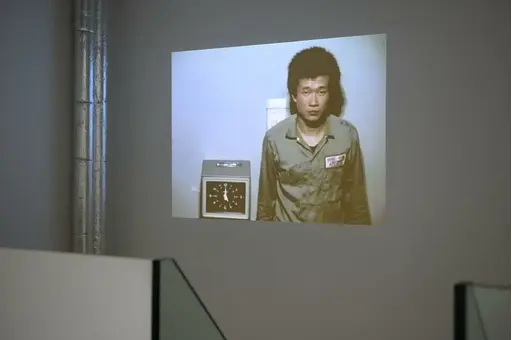
In dit essay reageert Amelia Groom op Tehching Hsieh's werk Time Clock Piece (One Year Performance 1980–1981) (1980-1981), een van de stukken die te zien is als onderdeel van de tentoonstelling No Linear Fucking Time bij BAK, basis voor actuele kunst, Utrecht. Door een lezing van het gelijktijdige anti-werk lied 9 to 5 (1980) van Dolly Parton reflecteert Groom op de historische verschuivingen in de manieren waarop werknemers werden en nog steeds worden uitgebuit door technieken van tijdsdiscipline.
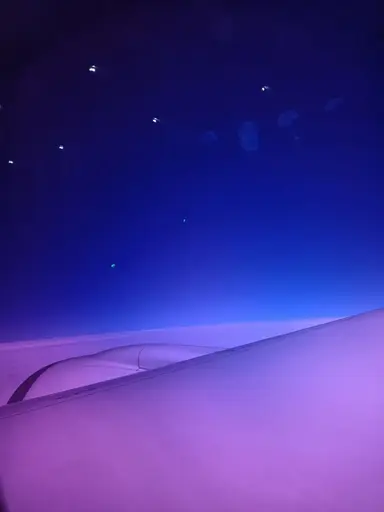
Grappling with the imposed linearity of timespace as a fundamental feature of colonial violence, this essay by Promona Sengupta (also known as Captian Pro of the interspecies intergalactic FLINTAQ+ crew of the Spaceship Beben) proposes a mode of time travel that is “untethered from colonial imaginations of the traversability of time and space.” While coloniality has enforced an externalization of time and space as things outside the body, Sengupta affirms practices of relational care and survival that restore time and space as embodied realities.

Weird Times (2021) is een chapbook van 30 pagina's door kunstenaars Tiffany Sia en Yuri Pattison over de tijd aflezen en hegemonie. Het bevat Sia's schrijfwerk en beelden geselecteerd door Pattison, en geeft een korte geschiedenis weer van de ontiwkkeling van technologieën voor tijdregistratie. De klok wordt gedemonteerd als een politiek werktuig, een metronoom van dwang en een versneller van oorlogsmacht. Uit deze mechanieken verschijnen weerstandige ‘counter-tempos'.
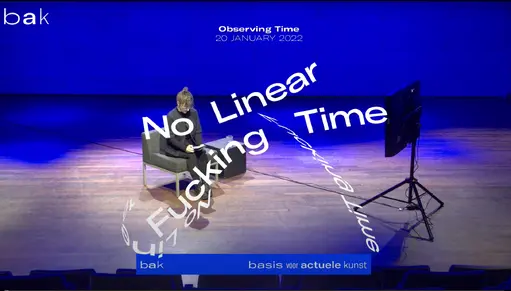
Een online gesprek met performance kunstenaar Tehching Hsieh, schrijver Amelia Groom en schrijver en curator Adrian Heathfield, geleid door Rachael Rakes, BAK curator Public Practice, op 20 januari 2022. Het gesprek neemt Hsieh's werk als uitgangspunt voor het bespreken van onder andere perfomatieve tijd, werktijd, gaten en ritmes van uithoudingsvermogen.
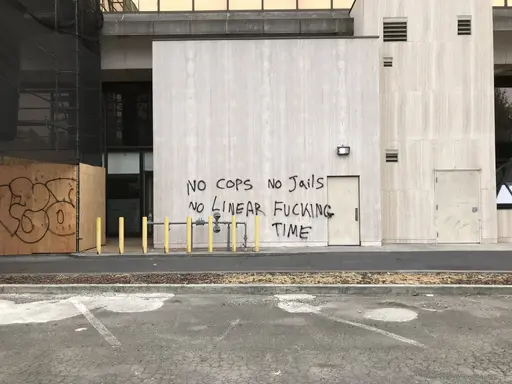
The No Linear Fucking Time Bibliografie is een zich ontwikkelend naslagwerk waarin wetenschappelijke en artistieke teksten worden gebundeld die betrekking hebben op de verscheidene onderzoekslijnen binnen dit project.

In ‘Reclaiming Time: On Blackness and Landscape’ (voor het eerst gepubliceerd in PN Review issue 257 in 2021), bekijkt dichter en schrijver Jason Allen-Paisant de geracialiseerde maatschappelijke contexten en moderne milieuconstructen die ‘Zwarte levens disproportioneel beroven van de voordelen van tijd.’ Hij put uit zijn poëziebundel Thinking with Trees om een koloniale epistemologie van de natuur te schetsen, en de rol van poëzie te benadrukken in het genereren van vormen van Zwart verwantschap en politiek bewustzijn, gebaseerd op een hernieuwd gevoel van ‘diepe tijd’. De vraag of het mogelijk is om middels poëzie ‘tijd terug te claimen’ staat centraal in de tekst.
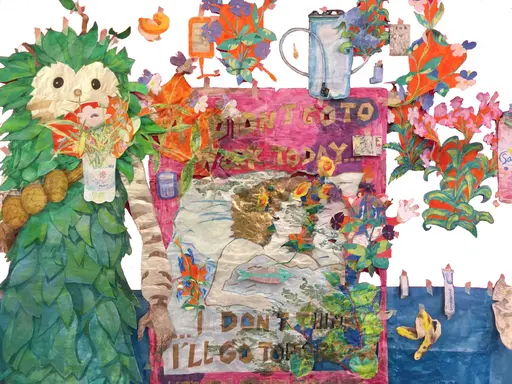
Als hij door de ‘Nothing To Declare’ uitgang van het vliegveld London Stansted loopt, ziet Sam Keogh drie grensbewakers: een varken, een eenhoorn en een bezorgde cartoonklok. Pig Eater is het script voor een monoloog dat voor het eerst opgevoerd werd als onderdeel van Keogh’s tentoonstelling Sated Soldier, Sated Peasant, Sated Scribe, in Goldsmiths Centre for Contemporary Art, Londen in 2021. Het verweeft fantasieën over overvloed en de afschaffing van werk; over feesten en rusten; over sabotage, anachronisme en het ‘opfokken’ van lineaire tijd.
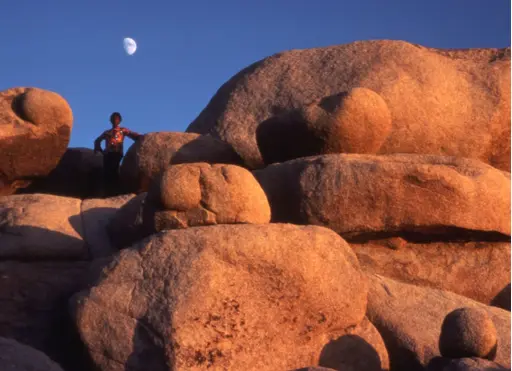
In dit gesprek met Walidah Imarisha (voor het eerst gepubliceerd in Toward the Not Yet: Art as Public Practice, BAK en MIT Press, 2021), schetst de schrijver en activist haar concept van ‘visionaire fictie’ als een verbeeldingspraktijk om toekomsten te verlossen van het bolwerk van lineaire tijd. Imarisha put uit haar werk als strafrechtelijk abolitionist, en spreekt specifiek tot de bewegingen en ideeën die voortkomen uit de Zwarte strijd in de Verenigde Staten. Ze benadrukt dat we ons bij het veranderen van de toekomst moeten verhouden tot het verleden: ‘specifiek vanuit een kader gericht op gedekoloniseerde, niet-lineaire dromen van vrijheid die gegrond zijn in de strijd van gemeenschappen van kleur voor autonomie en bevrijding van kolonialisme.’
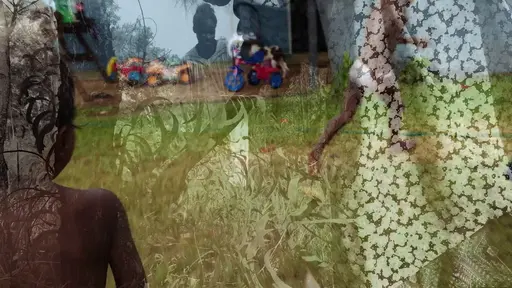
In haar essay ‘In Some Places the Not-Yet Has Long Been Already’ (voor het eerst gepubliceerd in Toward the Not Yet: Art as Public Practice, uitgegeven door BAK, basis voor actuele kunst en MIT Press, 2021) put Elizabeth A. Povinelli uit haar werk als onderdeel van het Karrabing Film Collective. In de tekst contrasteert ze de temporele oriëntatie van het laat-koloniale liberalisme – getroebleerd door de op handen zijnde catastrofes van een totale klimaatinstorting – met de voorouderlijke catastrofes van kolonialiteit en slavernij, die zowel van het verleden als het heden zijn. Deze voorouderlijke catastrofes, aldus Povinelli, ‘blijven groeien uit de grond die kolonialisme en racisme hebben bewerkt, in plaats van op te duiken aan de horizon van liberale vooruitgang.’

‘Dysfluent Waters’ is onderdeel van het multidimensionale project The Clearing van muzikant en schrijver JJJJJerome Ellis, respectievelijk een boek uitgegeven door Wendy’s Subway en een gelijknamig album uitgebracht door NNA Tapes in 2021. Hij ziet het bos en haar open plekken als ‘plaatsen waar al eeuwenlang verzet plaatsvindt middels zwarte gesproken cultuur.’ Ellis onderzoekt hoe stotteren, zwartheid, en muziek een rol kunnen spelen bij verzetspraktijken tegen dominante voorschriften voor de beleving van tijd, spraak en ontmoeting.

In haar tekst ‘Dearest Zen (Letters to Lichen)’ presenteert kunstenaar en wetenschapper Adriana Knouf toekomstige liefdesbrieven aan korstmossen: de samengestelde symbioten van schimmels en algen of cyanobacterieën. Bezien door de lenzen van de ‘xenologie’ (Knouf’s term voor de studie, analyse en ontwikkeling van het vreemde, buitenaardse en andere) en trans*-tijdelijkheden, onderzoekt ze manieren om te leren van, en opgetogen mee te doen met, intimiteiten en uitwisselingen tussen verschillende organismen.

In ‘Immortals: on the Ancient Future Lives of Stone and Plastic’ verweeft Marianne Shaneen verhalen, geschiedenissen en ontologieën van twee materialen: steen en plastic. Als quasi-onsterfelijke substanties zijn steen en plastic getuige van de catastrofale effecten van uitbuitende lineariteit, terwijl hun levensloop veel langer is dan dat van een mensenleven. Dit essay verweeft deze twee materialen, die schommelen tussen het geologische en synthetische, en die diep ingebed zijn in industrieel-kapitalistische ontwikkeling.

‘The Clearing: Melismatic Palimpsest’ is onderdeel van het multidimensionale project The Clearing van muzikant en schrijver JJJJJerome Ellis, respectievelijk een boek uitgegeven door Wendy’s Subway en een gelijknamig album uitgebracht door NNA Tapes in 2021. Hij ziet het bos en haar open plekken als ‘plaatsen waar al eeuwenlang verzet plaatsvindt middels zwarte gesproken cultuur.’ Ellis onderzoekt hoe stotteren, zwartheid, en muziek een rol kunnen spelen bij verzetspraktijken tegen dominante voorschriften voor de beleving van tijd, spraak en ontmoeting.